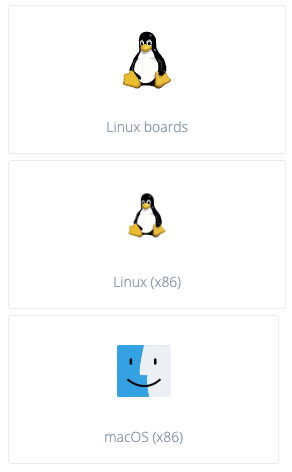/* Edge Impulse ingestion SDK
* Copyright (c) 2022 EdgeImpulse Inc.
*
* Permission is hereby granted, free of charge, to any person obtaining a copy
* of this software and associated documentation files (the "Software"), to deal
* in the Software without restriction, including without limitation the rights
* to use, copy, modify, merge, publish, distribute, sublicense, and/or sell
* copies of the Software, and to permit persons to whom the Software is
* furnished to do so, subject to the following conditions:
*
* The above copyright notice and this permission notice shall be included in
* all copies or substantial portions of the Software.
*
* THE SOFTWARE IS PROVIDED "AS IS", WITHOUT WARRANTY OF ANY KIND, EXPRESS OR
* IMPLIED, INCLUDING BUT NOT LIMITED TO THE WARRANTIES OF MERCHANTABILITY,
* FITNESS FOR A PARTICULAR PURPOSE AND NONINFRINGEMENT. IN NO EVENT SHALL THE
* AUTHORS OR COPYRIGHT HOLDERS BE LIABLE FOR ANY CLAIM, DAMAGES OR OTHER
* LIABILITY, WHETHER IN AN ACTION OF CONTRACT, TORT OR OTHERWISE, ARISING FROM,
* OUT OF OR IN CONNECTION WITH THE SOFTWARE OR THE USE OR OTHER DEALINGS IN THE
* SOFTWARE.
*/
/* Include ----------------------------------------------------------------- */
#include "model-parameters/model_metadata.h"
#include "ei_device_lib.h"
#if defined(EI_CLASSIFIER_SENSOR) && EI_CLASSIFIER_SENSOR == EI_CLASSIFIER_SENSOR_CAMERA
#include "edge-impulse-sdk/classifier/ei_run_classifier.h"
#include "edge-impulse-sdk/dsp/image/image.hpp"
#include "ei_camera.h"
#include "firmware-sdk/at_base64_lib.h"
#include "firmware-sdk/jpeg/encode_as_jpg.h"
#include "firmware-sdk/ei_device_interface.h"
#include "stdint.h"
#include "ei_device_nicla_vision.h"
#include "ei_run_impulse.h"
#include <ea_malloc.h>
#define DWORD_ALIGN_PTR(a) ((a & 0x3) ?(((uintptr_t)a + 0x4) & ~(uintptr_t)0x3) : a)
#define ALIGN_PTR(p,a) ((p & (a-1)) ?(((uintptr_t)p + a) & ~(uintptr_t)(a-1)) : p)
typedef enum {
INFERENCE_STOPPED,
INFERENCE_WAITING,
INFERENCE_SAMPLING,
INFERENCE_DATA_READY
} inference_state_t;
static inference_state_t state = INFERENCE_STOPPED;
static uint64_t last_inference_ts = 0;
static bool debug_mode = false;
static bool continuous_mode = false;
static uint8_t *snapshot_buf = nullptr;
static uint32_t snapshot_buf_size;
static ei_device_snapshot_resolutions_t snapshot_resolution;
static ei_device_snapshot_resolutions_t fb_resolution;
static bool resize_required = false;
static uint32_t inference_delay;
// Define the top of the image and the number of columns
static int TOP_Y = 50;
static int NUM_COLS = 5;
static int COL_WIDTH = EI_CLASSIFIER_INPUT_WIDTH / NUM_COLS;
static int MAX_ITEMS = 10;
// Define the factor of the width/height which determines the threshold
// for detection of the object's movement between frames:
static float DETECT_FACTOR = 1.5;
// Initialize variables
std::vector<int> count(NUM_COLS, 0);
int countsum =0;
int notfoundframes = 0;
std::vector<std::vector<ei_impulse_result_bounding_box_t> > previous_blobs(NUM_COLS);
static int ei_camera_get_data(size_t offset, size_t length, float *out_ptr)
{
// we already have a RGB888 buffer, so recalculate offset into pixel index
size_t pixel_ix = offset * 3;
size_t pixels_left = length;
size_t out_ptr_ix = 0;
while (pixels_left != 0) {
out_ptr[out_ptr_ix] = (snapshot_buf[pixel_ix] << 16) + (snapshot_buf[pixel_ix + 1] << 8) + snapshot_buf[pixel_ix + 2];
// go to the next pixel
out_ptr_ix++;
pixel_ix+=3;
pixels_left--;
}
// and done!
return 0;
}
void ei_run_impulse(void)
{
switch(state) {
case INFERENCE_STOPPED:
// nothing to do
return;
case INFERENCE_WAITING:
if(ei_read_timer_ms() < (last_inference_ts + inference_delay)) {
return;
}
state = INFERENCE_DATA_READY;
break;
case INFERENCE_SAMPLING:
case INFERENCE_DATA_READY:
if(continuous_mode == true) {
state = INFERENCE_WAITING;
}
break;
default:
break;
}
snapshot_buf = (uint8_t*)ea_malloc(snapshot_buf_size + 32);
snapshot_buf = (uint8_t *)ALIGN_PTR((uintptr_t)snapshot_buf, 32);
// check if allocation was successful
if(snapshot_buf == nullptr) {
ei_printf("ERR: Failed to allocate snapshot buffer!\n");
return;
}
EiCameraNiclaVision *camera = static_cast<EiCameraNiclaVision*>(EiCameraNiclaVision::get_camera());
ei_printf("Taking photo...\n");
bool isOK = camera->ei_camera_capture_rgb888_packed_big_endian(snapshot_buf, snapshot_buf_size);
if (!isOK) {
return;
}
if (resize_required) {
ei::image::processing::crop_and_interpolate_rgb888(
snapshot_buf,
fb_resolution.width,
fb_resolution.height,
snapshot_buf,
snapshot_resolution.width,
snapshot_resolution.height);
}
ei::signal_t signal;
signal.total_length = EI_CLASSIFIER_INPUT_WIDTH * EI_CLASSIFIER_INPUT_HEIGHT;
signal.get_data = &ei_camera_get_data;
// Print framebuffer as JPG during debugging
if(debug_mode) {
ei_printf("Begin output\n");
size_t jpeg_buffer_size = EI_CLASSIFIER_INPUT_WIDTH * EI_CLASSIFIER_INPUT_HEIGHT >= 128 * 128 ?
8192 * 3 :
4096 * 4;
uint8_t *jpeg_buffer = NULL;
jpeg_buffer = (uint8_t*)ei_malloc(jpeg_buffer_size);
if (!jpeg_buffer) {
ei_printf("ERR: Failed to allocate JPG buffer\r\n");
return;
}
size_t out_size;
int x = encode_rgb888_signal_as_jpg(&signal, EI_CLASSIFIER_INPUT_WIDTH, EI_CLASSIFIER_INPUT_HEIGHT, jpeg_buffer, jpeg_buffer_size, &out_size);
if (x != 0) {
ei_printf("Failed to encode frame as JPEG (%d)\n", x);
return;
}
ei_printf("Framebuffer: ");
base64_encode((char*)jpeg_buffer, out_size, ei_putc);
ei_printf("\r\n");
if (jpeg_buffer) {
ei_free(jpeg_buffer);
}
}
// run the impulse: DSP, neural network and the Anomaly algorithm
ei_impulse_result_t result = { 0 };
EI_IMPULSE_ERROR ei_error = run_classifier(&signal, &result, false);
if (ei_error != EI_IMPULSE_OK) {
ei_printf("ERR: Failed to run impulse (%d)\n", ei_error);
ea_free(snapshot_buf);
return;
}
ea_free(snapshot_buf);
// print the predictions
ei_printf("Predictions (DSP: %d ms., Classification: %d ms., Anomaly: %d ms., Count: %d ): \n",
result.timing.dsp, result.timing.classification,result.timing.anomaly, countsum);
#if EI_CLASSIFIER_OBJECT_DETECTION == 1
bool bb_found = result.bounding_boxes[0].value > 0;
std::vector<std::vector<ei_impulse_result_bounding_box_t> > current_blobs(NUM_COLS);
for (size_t ix = 0; ix < result.bounding_boxes_count; ix++) {
auto bb = result.bounding_boxes[ix];
if (bb.value == 0) {
continue;
}
// Check which column the blob is in
int col = int(bb.x / COL_WIDTH);
// Check if blob is within DETECT_FACTOR*h of a blob detected in the previous frame and treat as the same object
for (auto blob : previous_blobs[col]) {
if (abs(int(bb.x - blob.x)) < DETECT_FACTOR * (bb.width + blob.width) && abs(int(bb.y - blob.y)) < DETECT_FACTOR * (bb.height + blob.height)) {
// Check this blob has "moved" across the Y threshold
if (blob.y >= TOP_Y && bb.y < TOP_Y) {
// Increment count for this column if blob has left the top of the image
count[col]++;
countsum++;
}
}
}
// Add current blob to list
current_blobs[col].push_back(bb);
ei_printf(" %s (%f) [ x: %u, y: %u, width: %u, height: %u ]\n", bb.label, bb.value, bb.x, bb.y, bb.width, bb.height);
}
previous_blobs = std::move(current_blobs);
if (bb_found) {
ei_printf(" Count: %d\n",countsum);
notfoundframes = 0;
}
else {
notfoundframes ++;
if (notfoundframes == 1){
ei_printf(" No objects found\n");
}
else {
ei_printf(" Count: %d\n",countsum);
}
}
#else
for (size_t ix = 0; ix < EI_CLASSIFIER_LABEL_COUNT; ix++) {
ei_printf(" %s: %.5f\n", result.classification[ix].label,
result.classification[ix].value);
}
#if EI_CLASSIFIER_HAS_ANOMALY == 1
ei_printf(" anomaly score: %.3f\n", result.anomaly);
#endif
#endif
if (debug_mode) {
ei_printf("\r\n----------------------------------\r\n");
ei_printf("End output\r\n");
}
if(continuous_mode == false) {
ei_printf("Starting inferencing in %d seconds...\n", inference_delay / 1000);
last_inference_ts = ei_read_timer_ms();
state = INFERENCE_WAITING;
}
}
void ei_start_impulse(bool continuous, bool debug, bool use_max_uart_speed)
{
snapshot_resolution.width = EI_CLASSIFIER_INPUT_WIDTH;
snapshot_resolution.height = EI_CLASSIFIER_INPUT_HEIGHT;
debug_mode = debug;
continuous_mode = (debug) ? true : continuous;
EiDeviceNiclaVision* dev = static_cast<EiDeviceNiclaVision*>(EiDeviceNiclaVision::get_device());
EiCameraNiclaVision *camera = static_cast<EiCameraNiclaVision*>(EiCameraNiclaVision::get_camera());
// check if minimum suitable sensor resolution is the same as
// desired snapshot resolution
// if not we need to resize later
fb_resolution = camera->search_resolution(snapshot_resolution.width, snapshot_resolution.height);
if (snapshot_resolution.width != fb_resolution.width || snapshot_resolution.height != fb_resolution.height) {
resize_required = true;
}
if (!camera->init(snapshot_resolution.width, snapshot_resolution.height)) {
ei_printf("Failed to init camera, check if camera is connected!\n");
return;
}
snapshot_buf_size = fb_resolution.width * fb_resolution.height * 3;
// summary of inferencing settings (from model_metadata.h)
ei_printf("Inferencing settings:\n");
ei_printf("\tImage resolution: %dx%d\n", EI_CLASSIFIER_INPUT_WIDTH, EI_CLASSIFIER_INPUT_HEIGHT);
ei_printf("\tFrame size: %d\n", EI_CLASSIFIER_DSP_INPUT_FRAME_SIZE);
ei_printf("\tNo. of classes: %d\n", sizeof(ei_classifier_inferencing_categories) / sizeof(ei_classifier_inferencing_categories[0]));
if(continuous_mode == true) {
inference_delay = 0;
state = INFERENCE_DATA_READY;
}
else {
inference_delay = 2000;
last_inference_ts = ei_read_timer_ms();
state = INFERENCE_WAITING;
ei_printf("Starting inferencing in %d seconds...\n", inference_delay / 1000);
}
if (debug_mode) {
ei_printf("OK\r\n");
ei_sleep(100);
dev->set_max_data_output_baudrate();
ei_sleep(100);
}
while(!ei_user_invoke_stop_lib()) {
ei_run_impulse();
ei_sleep(1);
}
ei_stop_impulse();
if (debug_mode) {
ei_printf("\r\nOK\r\n");
ei_sleep(100);
dev->set_default_data_output_baudrate();
ei_sleep(100);
}
}
void ei_stop_impulse(void)
{
state = INFERENCE_STOPPED;
}
bool is_inference_running(void)
{
return (state != INFERENCE_STOPPED);
}
#endif /* defined(EI_CLASSIFIER_SENSOR) && EI_CLASSIFIER_SENSOR == EI_CLASSIFIER_SENSOR_CAMERA */
// AT+RUNIMPULSE



